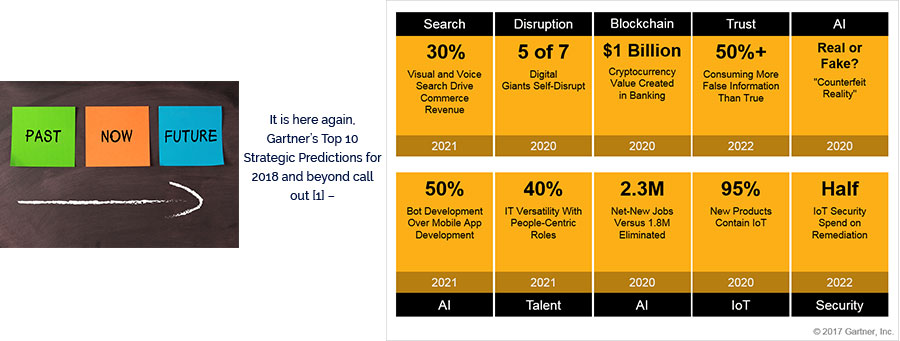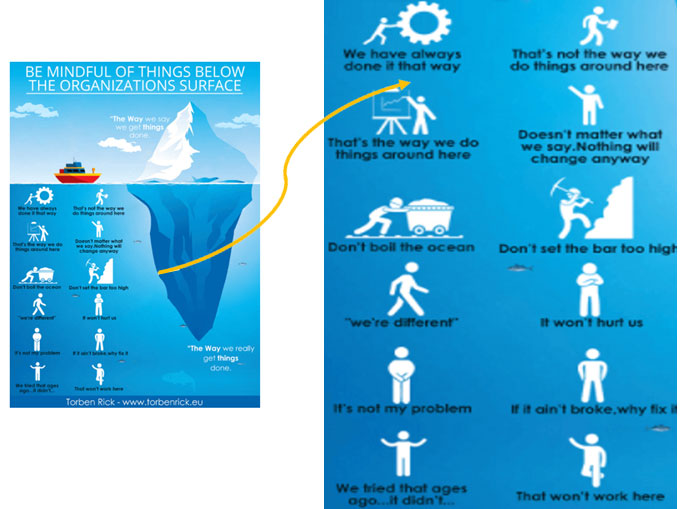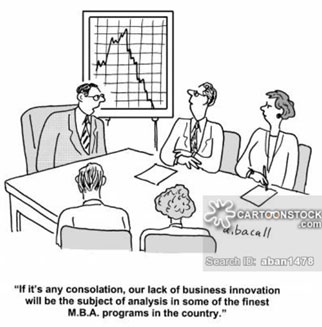The Twin-effect of Speed of Change & Disruptive Innovation: Part 2 – Considerations for OCM
Publish Date: March 9, 2018“The world is changing very fast. Big will not beat small anymore. It will be the fast beating the slow.”
-Rupert Murdoch.
With Yesterday’s innovation becoming today’s legacy, what does the future hold? The future, more so in the context of Disruptive Innovation & Speed of Change

As we continue from Part 1 of this post, on the constancy involved in change & the journey to aspirational change initiative, we’ll dwell on certain considerations for the much needed OCM, Organizational Change Management. The considerations that could help us avert the Iceberg illusion. The illusion of invisible, but, certain known aspects though, of what Organizational Change Initiative could successfully traverse the journey through.
Continuing the Journey
The greatest danger in times of turbulence is not the turbulence – it is to act with yesterday’s logic – Peter Drucker.
In the seeming world of turbulence amidst whats’s impacting today’s world disruptively & its pace, the success or failure of the Change Initiative and the success through the sail of transformational journey could be a subjective connotation to the said context. Pondering on the famous quote of Einstein – “We cannot solve our problems with the same thinking we used when we created them”, which seems logical and true; the need of the hour in the NOW is to act.
The pain of change must be less than the pain of not changing [2] and backed by an agile mindset. The mindset of acting in an agile manner, not necessarily implementing agile practices. My blog post on, ‘A Paradigm Shift to the New Breed Called Exponential Organizations – 10x Faster, Better & Cheaper’ would provide insights to the disruption seekers in either disrupting or in being disrupted and the opportunities ahead in accomplishing their MTP, the Massive Transformative Purpose. The accomplishment involving a Mindset shift towards aiming and accomplishing the change initiative. Uber, Netflix, Airbnb, and Googles of the world have proved the bounty results from this massive paradigm shift in accomplishing the exponential growth as against linearity in growth achieved in a comparatively shorter span of time. Read the blog post for details.
Amongst the many success enablers the journey could encompass are the traits of an Organization’s Change Capabiity, it’s’ Service Capability & measurability of its Performance involving an all-encompassing course-correction attribute.
Where do you see yourself on the spectrum?

Or
2. Are you the one with a, ‘wait-and-watch’ attitude?
Either way, no harm! As long as you are a part of the flock as one size-fits all, or one strategy drives-all cannot be a norm. The real world could involve a mismatch in the gamut of Organizational play in the Industry on what the technologies have to offer, the adaptability, the risk appetite, an Organization’s investment aspiration, how fast the world is moving, where the company wants to see itself, etc.
As such, the success of the aspired Change Initiative depends on the choices being made, but, worth making a try in moving its bandwagon of capabilities to the Massive Transformative Purpose, the MTP.
In the words of Albert Einstein – “Everybody is a genius. But if you judge a fish by its ability to climb a tree, it will live its whole life believing that it is stupid”
An Organization’s Change capability is the worth it possesses and a reflection of its culture. The culture that could span aspects of people thinking, mindset shifts, breakthroughs on latest technological bravos, service capability, building partnerships, enhancing customer base, all packaged towards an end-to-end holistic approach to managing businesses; a totality on the continuum of excellence and improvements.
Transforming to the Successful lot
McKinsey defines Organisational capabilities as “anything an organization does well that drives meaningful business results”. Both, individuals and organizations do possess capabilities. The sum of people capabilities would attribute to building up the Organization’s capabilities. As such, the assets an organization would possess which is its net-worth is a sum of its Resources and Capabilities. Variants of these Resources and Capabilities could be either tangible or intangible. Some of the capabilities of skills, knowledge possessed, organizational behavior etc, are intangible assets of an organization and do take time and in some instances, trust as well, to get built. So, the successful organizations, more so the admired and respected ones are the ones that would have invested and focused in their capabilities, say for example, something like, ‘People First’ strategy.
Experienced senior executive, Torben Rick, on the hidden challenges of Organizational change [3], illustrates using the icerbeg illusion, on “the way we say we get things done” and “the way we get things done”. These aspects of it lie invisible beneath the tip of the iceberg.

Building the Wisdom, the Wisdom much needed to Safeguard the controls
So the caution and wisdom are in being aware and conspicuous of the invisible and in safeguarding the organizational transformation journey. Some of the safeguard considerations could involve a look at certain avoidable pitfalls that could otherwise hit the titans of Organizational transformation to be able to skillfully wade-through to the aspired destination.
Anupam Kundu and Tarang Bakshi [4] in their work at ThoughtWorks have sighted seven pitfalls to avoid during Organizational transformation –
- Neglecting the People Dimension of Change
- Not Managing Expectations on the Trough of Despair
- Persisting with old world Measures for new world Outcomes
- Over Reliance on Centralized Change Management to usher Change
- Focus on Pushing Change out instead of generating Pull
- Not Pausing for Celebration and Reflection
- Losing Focus on Customer while undergoing Transformation
Continuing on one other interesting variant of pitfall [5] that could weaken the weak, but, as well could be tangentially looked to strengthen the strengths, is the utilization of the 3% that drive perceptions of the grapevine and in skillfully using this very 3% to advantage in driving the much aspired change initiative.
Conclusion backed by Philosophy
The journey doesn’t involve a conclusion, as change is a constant and an inevitable aspect, but, the outcome here is the much-needed one to conclude this blog post:
If not for any attempts that have made and any of the successes that have been achieved; there would be an element of learning that is gained.
It gets to conclude that the efforts have been made and there is always a ray of hope for the best!

Contact us today to know more about how YASH can help you tackle the challenges that arise during a digital transformation.
Lakshmi Nanduri – Program manger @YASH Technologies
Lakshmi Nanduri
References & Image Credits –
- https://www.gartner.com/technology/research/predicts/
- https://hbr.org/2011/02/how-can-the-disruption-of-proc
- https://www.torbenrick.eu/blog/culture/mindful-things-organizations-surface/
- https://www.thoughtworks.com/insights/blog/seven-pitfalls-avoid-during-organizational-transformation
- https://www.slideshare.net/InnovisorInc/evidence-based-change-innovisor-presentation

















